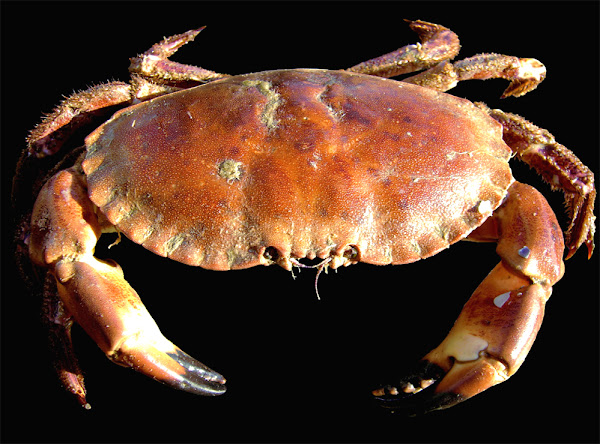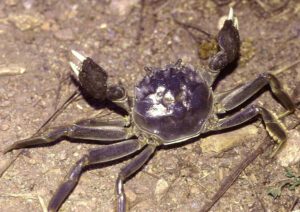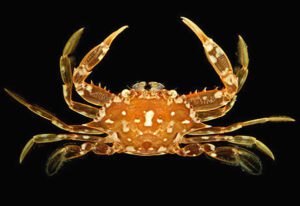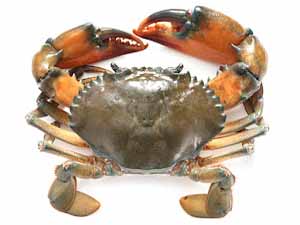The Brown crab or Edible crab is a species of crab which is found in the North Sea, North Atlantic Ocean and possibly in the Mediterranean Sea.
It is a moderately important crab species. And it is generally caught with traps, and also as by catch in trawl fisheries.
Total catch of this crab was reported as 41,337 tonnes in 1999. United Kingdom and France were the countries with the largest catches.
It is the most important edible crab fishery in Europe. It is the subject of the largest crab fishery in Western Europe, centred on the coasts of the British Isles, with more than 60,000 tonnes caught annually. However, read some more information about this crab species below.
Brown Crab Characteristics
As the name suggests, the Brown crabs are of reddish-brown color, having an oval carapace with a characteristic ‘pie crust’ edge and black tips to the claws. But the young specimens are of purple-brown color.
These crabs generally bear white patches, and is shaped along the front edge into nine rounded lobes. resembling a pie crust.
The first pereiopod is modified into a strong cheliped, the dectylus and propodus are black at the tips. The other pereiopods are covered with rows of short stiff setae; the dactylus of each is black towards the tip, and ends in a sharp point.
The antennae and antennules are visible from the front, and there are the orbits in which the eyes are situated.

The carapace width of the mature Brown crab can be up to 25 cm. And they can reach a body weight of up to 3 kg. Photo and info from Wikipedia.
Diet
The Brown crab’s diet include a variety of crustaceans and molluscs. It may stalk or ambush motile prey, and may dig large pits to reach buried molluscs.
Breeding
Reproduction of the Brown crab occurs in winter. The male stands over the female and forms a cage with his legs protecting her while she molts.
The female retreats to a pit on the sea floor to lay her eggs after mating. On an average the females lay around 0.25-3.0 million eggs.
Uses
The Brown crab are edible crabs. They are also known as ‘Edible crab’. They are mainly used and popular for food.
Special Notes
The Brown crab is a moderately important crab species. It is heavily exploited commercially throughout it’s range. And it is the most important crab species in Western Europe.
The Brown crab fishery is widely dispersed around the British and Irish coasts. And the species is thought to be overfished across much of this area.
Most of the crabs caught by the British fleet are exported live for sale in France and Spain.
The Brown crabs love to inhabit rocky or sandy bottom. They generally live between 6 and 40 meter depth. They are edible crabs and used mainly for food.
Around one third of the weight of a mature crab is meat (of which one third is white meat from the claws, and two third is brown meat from the body).
The male crabs have more sweet white meat, and the females have more rich brown meat. This crabs are generally marketed fresh and frozen. However, review full breed profile of the Brown crab in the table below.
| Name | Brown Crab |
| Kingdom | Animalia |
| Phylum | Arthropoda |
| Class | Malacostraca |
| Order | Decapoda |
| Family | Cancridae |
| Genus | Cancer |
| Species | C. pagurus |
| Binomial Name | Cancer pagurus |
| Other Names | Also known as Edible crab |
| Breed Purpose | Food |
| Special Notes | Economically important crab species, most important crab species in Western Europe, love to inhabit rocky or sandy bottom, used mainly for food, marketed fresh or frozen |
| Weight | Can reach up to 3 kg |
| Breeding Method | Natural |
| Climate Tolerance | Native climate |
| Body Color | Reddish-brown |
| Rarity | Common |
| Availability | North Sea, North Atlantic Ocean and perhaps in the Mediterranean Sea |






